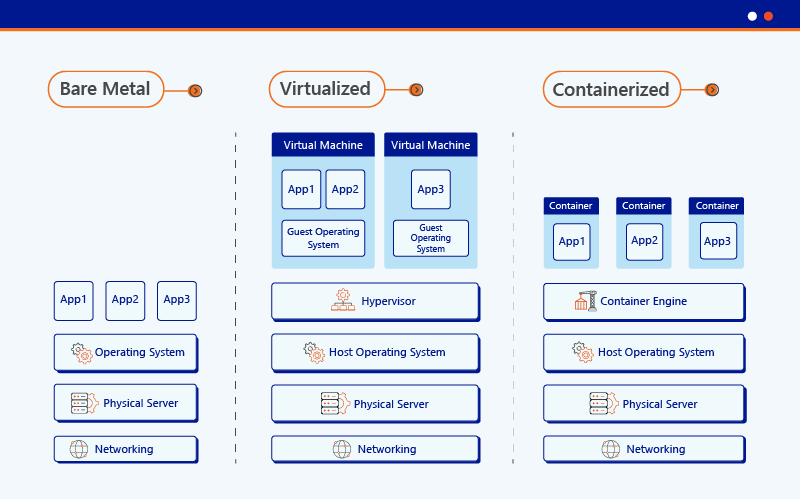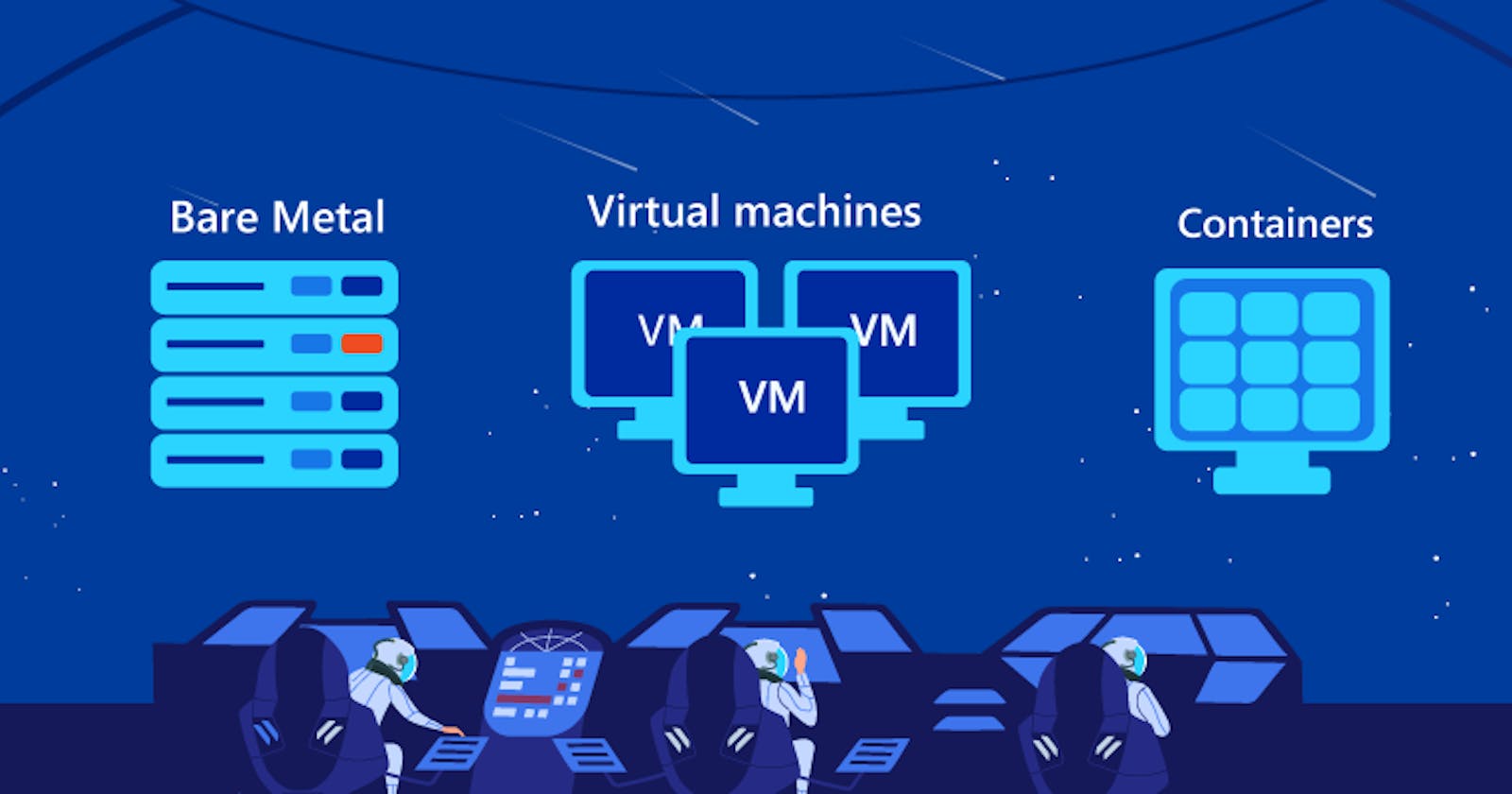Unveiling the Performance Differences: Virtualization vs. Containerization vs. Bare-Metal
As technology continues its relentless evolution, the landscape of deploying applications and managing resources has undergone a profound transformation. Virtualization and containerization have emerged as prominent solutions, each catering to distinct needs and challenges. As we delve into this blog post, we will explore the differences between virtualization, containerization, and bare-metal deployments, with a special focus on their performance aspects.

Virtualization: A Multifaceted Approach
Virtualization, often exemplified by platforms like VMware, revolutionized the way we utilize physical hardware resources. This technique involves the creation of virtual machines (VMs), each hosting a separate operating system (OS), on a single physical server. This approach facilitates the coexistence of multiple OSes, effectively isolating them from one another.
The performance landscape in virtualization is intriguing. On one hand, the abstraction layer introduced by the hypervisor enables the efficient utilization of hardware resources, allowing multiple VMs to run simultaneously. This consolidation often results in enhanced resource management and utilization, making it an ideal solution for scenarios where strong isolation between applications is required.
However, the overhead of running multiple OS instances and the virtualization layer itself can impact performance. While modern hypervisors have become more efficient over time, there might still be a noticeable disparity between bare-metal and virtualized performance for certain workloads.
Containerization: Bridging the Gap
Containerization, represented by platforms like Docker, takes a different approach. Containers package applications and their dependencies into isolated units, all sharing the same host operating system. This lightweight method of virtualization enables faster provisioning, efficient resource utilization, and consistent application behavior across various environments.
Performance in containerization is often lauded for its speed and efficiency. Since containers share the same OS kernel and run on top of the host’s operating system, they bypass the overhead of virtualizing hardware. This results in reduced resource consumption and faster startup times compared to traditional virtual machines.
Bare-Metal: Unleashing the Power
Bare-metal deployment, where applications run directly on the physical hardware without virtualization or containerization layers, offers the highest potential for raw performance. Since there is no abstraction layer, applications can directly access hardware resources, leading to minimal overhead.
For workloads that demand uncompromising performance, such as high-performance computing or data-intensive applications, the bare-metal approach shines. However, managing and scaling applications on bare metal can be more complex than with virtualization or containerization.
Performance Observations: Navigating the Variance
The performance differences among virtualization, containerization, and bare-metal deployments can vary widely based on the nature of the workload and the efficiency of the underlying technologies. In some cases, containerization might deliver performance close to that of bare metal, particularly for microservices or lightweight applications. Conversely, virtualization might introduce more overhead, making it less suitable for performance-sensitive applications.
In the journey to select the right deployment approach, understanding the nuances of performance is crucial. Virtualization offers consolidation and strong isolation, containerization strikes a balance between isolation and efficiency, while bare-metal provides unadulterated performance potential. Assessing the performance requirements of your applications and weighing them against the management complexity of each approach will guide you toward the optimal solution. Ultimately, the ideal choice lies in aligning your deployment strategy with the unique demands of your applications and business objectives.
About LARION JSC
LARION, a global software outsourcing partner with 2 decades deep industry expertise. We are a 100% Vietnam-based technology company specializing in crafting solutions and building highly skilled development teams for companies worldwide. Run by a team of successful entrepreneurs and dedicated technical experts – LARION is a unique symphony where we create a frictionless future for customers with passion, while maintaining full compliance with your needs and objectives.
We offer a wide range of software development services, including:
Custom enterprise software development
System Integration
…and more…
We are committed to working with our clients to understand their needs and develop solutions that meet their specific requirements. We also offer a wide range of support and maintenance services to ensure that our clients are satisfied with our software solutions.
If you are looking for a reliable and experienced IT Offshoring partner, contact LARION JSC now!
